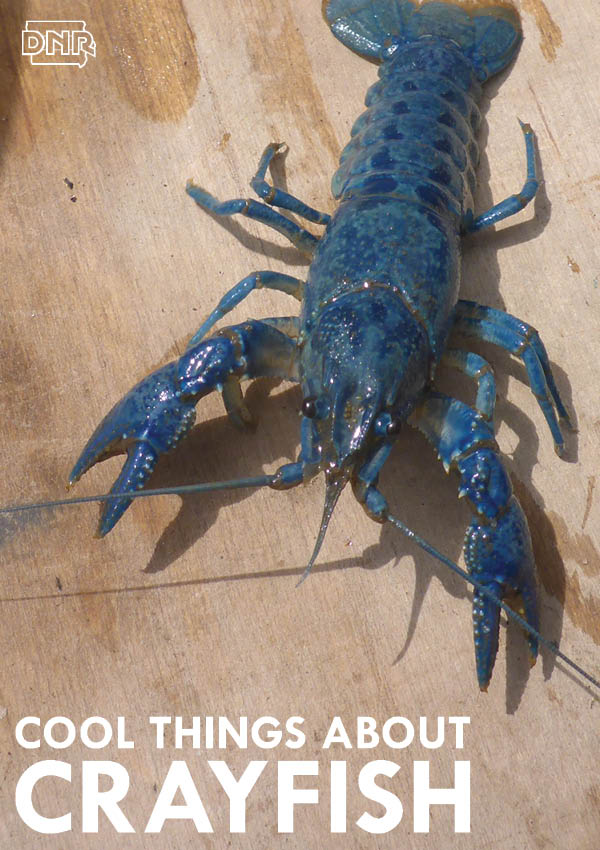 Whether you call it a crawdad, crayfish, or crawfish, the facts on these critters can be amazing. They can regrow legs, carry up to 450 eggs, and they’ve lived in Iowa for 13,000 years. And then there are cool blue crayfish like this one, called virile crayfish - scientists believe a recessive gene causes the bright blue coloring.
Whether you call it a crawdad, crayfish, or crawfish, the facts on these critters can be amazing. They can regrow legs, carry up to 450 eggs, and they’ve lived in Iowa for 13,000 years. And then there are cool blue crayfish like this one, called virile crayfish - scientists believe a recessive gene causes the bright blue coloring.
More on Iowa's crayfish from Iowa Outdoors magazine:
After glaciers receded nearly 13,000 years ago, crayfish moved here from populations in the warmer south and east. Not always able to survive brutal cold, many calico crayfish were destroyed during the harsh winter of 1976-77 and littered pond bottoms after the spring thaw. As important members of the aquatic food chain, Iowa crayfish studies first began in 1852.
That’s some serious DNA Humans have 46 chromosomes; crayfish have 200.
The numbers game Iowa’s eight species can carry 50 to 450 eggs, secured like a berry cluster under the tail by a special glue-like secretion. Upon hatch, offspring clutch the female’s tail for protection for weeks. In marshy areas along the Wapsipinicon River, colonies of several hundred burrows were found. The devil crayfish may burrow deeper than 12 feet.
What’s for supper? As omnivores, crayfish feed on plants and virtually any dead animal, although they are known to catch their own dinner (primarily small fish) if given the chance. Important to the food chain, crayfish make a meal for fish, wading birds, frogs, turtles, salamanders, snakes, raccoons, mink and otter.
Self-amputate If captured, a specialized muscle reflexes along a breaking joint and the leg is cast off to allow escape. Appendages are often lost during infighting as well. Missing limbs are regrown as mini-versions after the next molt, but grow full size over time. During regrowth, specimens with pinchers and limbs of various sizes are often found in the wild.
The life and times of a crayfish Male crayfish usually die after mating in the second year of life; females die after their young hatch, also at two years of age. Although some crawdads survive in ponds and lakes, they prefer faster moving, highly oxygenated environments. Crayfish often burrow in softer soils, leaving behind “chimneys” of mud balls on the banks of streams and rivers. Crayfish do not hibernate, but seek out deeper, warmer water or burrow below the frost line.
Crusty crustacean Crayfish are invertebrates, meaning they lack a backbone. Instead of an internal skeleton, they have a hard outer shell (exoskeleton) that offers protection but restricts growth. Thus, they molt (shed their shell) as they grow, often daily when young and weekly or monthly as they age. Their skin is soft the first few days after molting, making them vulnerable to predators. To strengthen new growth, discarded shells are eaten to add needed calcium.
For more on Iowa’s critters, check out our Iowa Wildlife board on Pinterest.